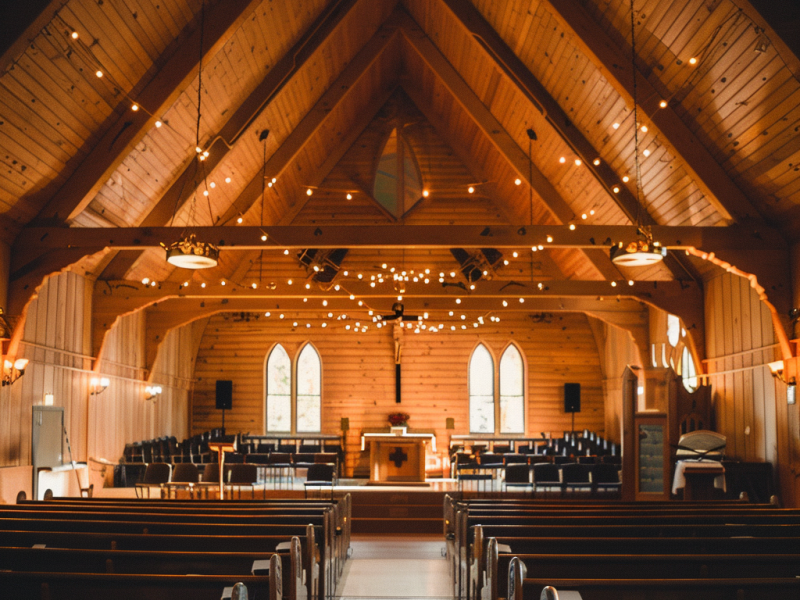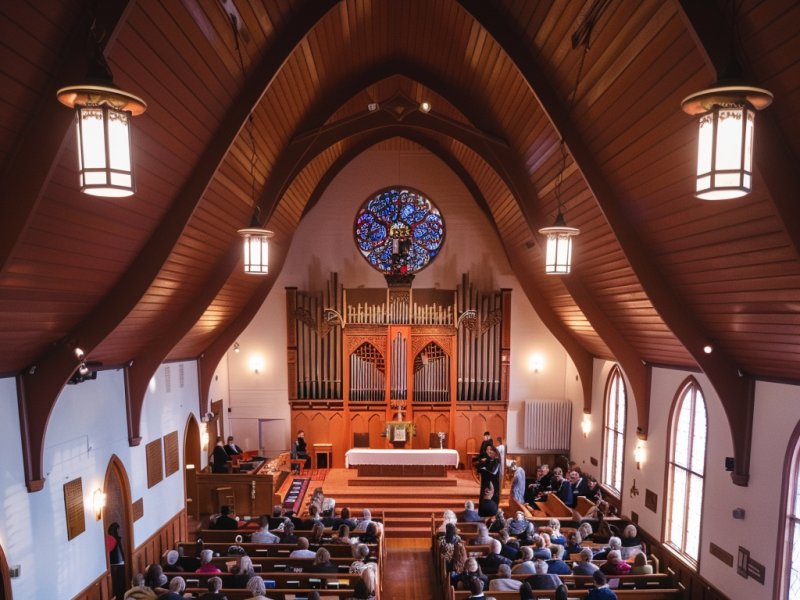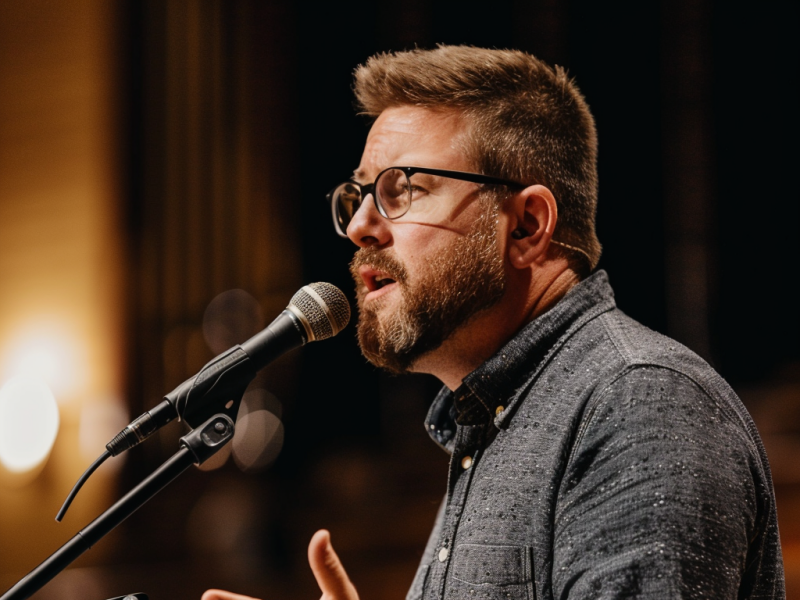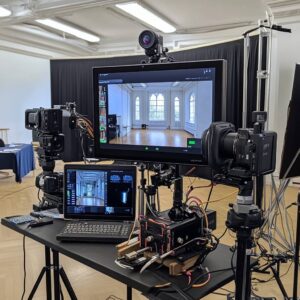What sets church AV installers apart? Expertise in sacred spaces
In the world of audiovisual installations, the requirements of religious institutions set them distinctly apart from other venues. Churches, with their unique architectural features and specific community needs, demand more than technical AV solutions; they require a deep understanding of acoustics and ambiance. This piece explores the specialized skills and considerations that professional church AV installers bring to sacred spaces, ensuring that technology enhances rather than distracts from the spiritual experience. From managing complex acoustics in historically significant buildings to integrating modern technology discreetly, the expertise needed for church AV installations is as specialized as the venues.

Specialized Knowledge
When it comes to audiovisual installations in churches, specialized knowledge is paramount. Unlike typical venues, churches often feature complex architectural designs, such as high ceilings, large open spaces, and intricate acoustics that dramatically affect sound quality. Professional audiovisual installers must deeply understand these unique acoustic challenges to ensure that sound systems are effective and enhance the auditory experience for congregations.
One critical aspect of AV installation in churches is managing sound to complement the space’s natural acoustics. This requires a nuanced approach to speaker placement, audio testing, and system tuning. Installers must consider factors such as echo, reverberation, and sound clarity, adjusting their strategies to accommodate each church’s architectural features and materials.
Moreover, AV professionals working in sacred spaces must be adept at integrating modern technology with traditional practices. This includes choosing equipment that can support a variety of musical styles and spoken word presentations, from powerful gospel choirs to more subdued prayer services. The goal is to create a sound system that is versatile enough to handle different types of audio inputs while maintaining consistency and quality across all forms of worship.
This specialized knowledge is not merely technical but also interpretive, requiring installers to work closely with church leaders to understand their specific audiovisual goals and the auditory expectations of their communities. This blend of technical expertise and collaborative planning sets skilled church audiovisual installers apart and ensures that their installations resonate well with the unique atmosphere of each sacred space.
Aesthetic Sensitivity
In addition to technical proficiency, aesthetic sensitivity is crucial in audiovisual installations within church environments. Churches are not just places of worship but often historical landmarks with significant architectural and artistic heritage. Therefore, AV installers specializing in church settings must have a keen eye for design that respects and enhances the existing aesthetics without overpowering them.
The challenge lies in discreetly integrating modern AV technology into spaces that may have been designed centuries ago. This involves selecting equipment that can be camouflaged or subtly incorporated into the church’s interior. Speakers, projectors, and screens must be placed thoughtfully to avoid disrupting the space’s visual sanctity. For instance, cables can be routed to minimize visual impact, and speaker units can be custom-colored to blend with the church’s walls or woodwork.
Additionally, the lighting for video displays must be carefully managed to ensure it complements the church’s natural lighting and does not detract from the stained glass or other artistic elements. Lighting plays a particularly important role during different types of services or events, requiring flexible systems that can adjust to create the right ambiance for worship, concerts, or community gatherings.
This level of aesthetic sensitivity ensures that the technology functions optimally and feels like a natural part of the church’s environment, maintaining the solemnity and beauty of the worship space. Professional church AV installers must, therefore, balance their technical skills with a deep appreciation for art and history, ensuring that their installations respect and reflect the sacredness of the space.

Custom Solutions
With their varied layouts and functional needs, churches require more than one-size-fits-all AV solutions. Each church has unique requirements based on its architectural design, congregation size, and types of services conducted. Therefore, custom solutions are beneficial and necessary for creating effective audiovisual systems in these sacred spaces.
Customization begins with a thorough assessment of the church’s specific needs. This may involve creating multiple sound zones to accommodate different auditory experiences required in various parts of the church, such as the nave, the choir area, and the fellowship halls. For example, the main worship area might need a powerful sound system for music and preaching. In contrast, other areas might require softer, more ambient sound setups for personal reflection or smaller gatherings.
Video solutions also need to be tailored. This could mean installing projectors and screens that are easily visible from all angles without being intrusive or designing custom LED video walls that fit precisely within existing structures. The objective is to ensure that visual elements are accessible to every attendee, enhancing their engagement without detracting from the spiritual experience.
Regardless, control systems for these technologies must be user-friendly and adaptable to different service types. Custom control panels or integrated mobile solutions can be developed, allowing church staff or volunteers to easily manage audio and video settings and adapt to various events or services without extensive technical knowledge.
Community Understanding
A deep understanding of the community is the cornerstone of any successful church AV installation. This aspect goes beyond the mere technical setup and delves into what makes each church unique—its congregation and its practices. Church audio-visual installers must grasp the physical, social, and cultural nuances of the communities they serve to enhance the worship experience truly.
Each church community has its traditions, style of worship services, and expectations regarding audiovisual elements. For instance, a contemporary church with a young congregation might prioritize high-energy audio systems for live bands. In contrast, a more traditional church might focus on clear, articulate sound for sermons and choir performances. Understanding these preferences is crucial for designing AV systems congruent with the community’s worship style.
Furthermore, community understanding also involves recognizing the diverse roles that AV technology can play in church activities. Beyond regular services, many churches use their spaces for concerts, plays, community meetings, and other events. AV installers need to consider these varied uses when designing systems, ensuring versatility and ease of use so that the technology can support a wide range of activities without requiring constant adjustments or setups.
By fostering a deep understanding of the church community, AV installers ensure their installations serve more than just functional purposes; they enhance community engagement and support the church in fulfilling its mission. This thoughtful approach improves the effectiveness of AV systems and strengthens the relationship between technology providers and the communities they serve.

Technical Expertise
Addressing the technical challenges unique to church environments requires high expertise, particularly in managing acoustics and ensuring optimal visibility. Churches often feature high ceilings, large stained glass windows, and expansive open areas, all of which can create complex acoustic patterns and visual obstacles.
One of the primary technical challenges in such spaces is managing echoes and reverberations. Sound waves can bounce off hard surfaces and high vaults, leading to audio delays and muddiness. Church AV installers must strategically place sound-absorbing materials to counteract these issues and design sound systems that deliver clear, direct audio. Ensuring audio quality in such challenging environments demands precisely calibrating speakers and microphones tailored to each church’s architecture.
Another crucial aspect is screen visibility. Installers must ensure that projectors and screens are positioned so that visuals are clear from every angle, considering factors like natural light from windows and the height at which screens are mounted. This often involves creative solutions, such as retractable screens or multi-screen setups, to enhance visibility without disrupting the architectural integrity of the space.
Enhancing Worship Through Expert Church AV Installers
Church AV installations require a blend of specialized knowledge, aesthetic sensitivity, custom solutions, community understanding, and technical expertise to enhance worship experiences effectively. These elements ensure that audiovisual systems not only meet the unique acoustic and visual demands of sacred spaces but also respect and amplify each church’s spiritual and communal atmosphere. By focusing on these critical aspects, professional installers can provide AV solutions that are both technologically advanced and deeply integrated into the fabric of the church community.
As experienced church AV installers, RYGID AV understands the unique challenges and requirements of integrating audiovisual technology in houses of worship. Whether you want to upgrade your current system or install a new one, our team is here to provide expert guidance and custom solutions tailored to your specific needs. We invite you to reach out for a free consultation to discuss how we can enhance your worship services and community events with the right AV technology. Let RYGID AV help you create an engaging and spiritually enriching environment for your congregation.




